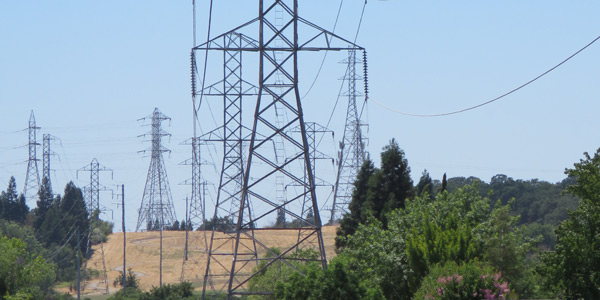By Jason Fordney
FERC last week approved Pacific Gas and Electric’s request to recover from its customers a portion of the costs of a $1.8 billion package of planned transmission improvements if the company is forced to abandon construction for reasons beyond its control.
The commission approved abandonment cost recovery for only some of the substation improvements and transmission lines that PG&E plans to construct (EL16-47). It also ruled that the utility is eligible for a 50-basis-point adder to its base return on equity as an incentive because the improvements are part of a regional transmission planning process.
The California Public Utilities Commission objected to PG&E’s proposals, saying the company had not demonstrated the improvements would relieve congestion and had not provided enough information on the scope of the projects. PG&E was not transparent about cost control, projects costs had escalated since CAISO’s approval and the utility had failed to quantify the possible abandoned plant cost to ratepayers, the PUC argued.
The PUC also contended that PG&E failed to disclose in CAISO’s competitive solicitation process that it intended to seek from FERC incentive rate treatment for the projects.
The Sacramento Municipal Utility District, Transmission Agency of Northern California and the Six Cities group also protested the incentives.
FERC disagreed, saying “the CPUC does not point to any commission order or provision of the CAISO Tariff requiring project sponsors to disclose, in advance, that they intend to seek transmission rate incentives for their respective projects from the commission.”
Public utilities can seek incentive-based rates for projects that preserve reliability or reduce delivered power costs by reducing congestion. To get the incentive and additional profit, PG&E must participate in a regional transmission planning process, which it does through CAISO.
The commission also held that PG&E was entitled to the rebuttable presumption that each of its projects would either increase reliability or reduce congestion because they were approved through CAISO’s FERC-sanctioned transmission planning process.
The projects listed in PG&E’s petition to FERC are the Wheeler Ridge substation; Northern Fresno 115-kV reinforcement; Midway-Andrew 230-kV project; Estrella 230/70-kV substation; Lockeford-Lodi Area 230-kV development; Martin Bus 2-kV bus extension; Oro Loma 70-kV reinforcement; and Spring 230-kV substation.
FERC approved PG&E’s requests for abandoned cost recovery for the Wheeler Ridge, Northern Fresno and Midway-Andrew projects but denied them for the others. The approved projects met FERC’s standard for a “nexus test” based on project scope and regulatory and construction risk because of land acquisition and other factors.
The commissioned also denied the company’s request for recovery of costs incurred up to the point of its March 10, 2016, filing.





